In a huge move by Intel, the company announced plans to discontinue the “M” SKUs from its current generation Xeon lineup. The 2nd generation Intel Xeon Scalable series M SKUs are the “medium” memory capacity SKUs with memory capacity reaching 2TB. This is a major announcement that the company told STH was the result of customer feedback. Personally, my feedback is that this is a long-overdue change. Not only is Intel discontinuing the M SKUs, but Intel is repositioning the “L” set of SKUs to fill the void.
2nd Gen Intel Xeon Scalable M SKUs Discontinued
First some history. With previous generations of Intel Xeons, such as the Xeon E5 series, an “L” suffix was usually a designator for low power CPUs. With the Intel Xeon Scalable launch in 2017, we saw several new suffixes added, including the “M” for higher-memory SKUs. You can read about that in Intel Xeon Scalable Processor Family SKUs and Value Analysis. With the second generation Intel Xeon Scalable launched in 2019, we saw a broader options list to the point that Intel introduced two options spots after the product number.
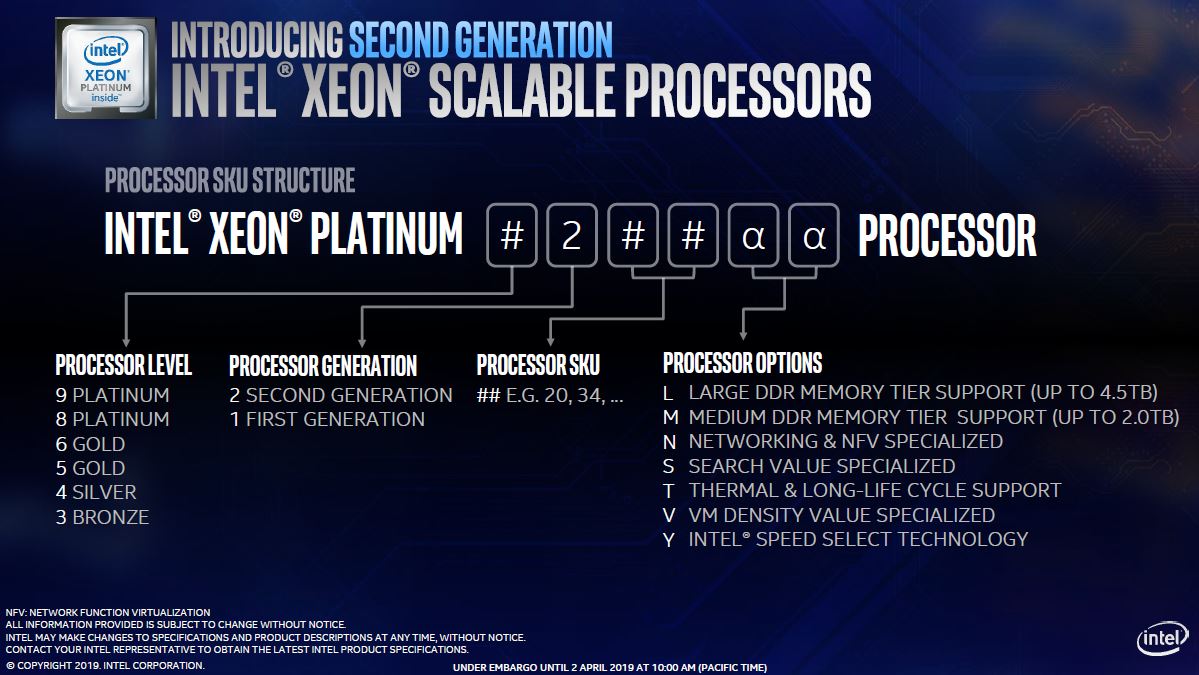
You can read our Second Generation Intel Xeon Scalable SKU List and Value Analysis as well as our launch overview and analysis piece where we covered this.
With the 2nd generation, codenamed “Cascade Lake” we had:
- Standard SKUs with up to 1TB memory support
- Medium (“M”) SKUs with up to 2TB of memory support
- Large (“L”) SKUs with up to 4.5TB of memory support
The M SKUs are important for those using large capacity (e.g. 128GB) LRDIMMs as well as Intel Optane DC Persistent Memory as one can easily exceed 1TB of capacity. The L SKUs are designed for high capacity DRAM plus 256GB and 512GB DCPMM deployments. Intel’s rationale was that it wanted to capture value for enabling higher DRAM mixes. At high capacities, memory costs balloon and dwarf CPU costs, so this was Intel’s way of pushing against that.
Using the Platinum 8260 series as an example $USD pricing was impacted as such:
- Platinum 8260 – $4702
- Platinum 8260M – $7705
- Platinum 8260L – $12599
The M series carried about a $3000 list price premium here while the L series carried about a $7000 premium.
Intel is doing a mid-cycle rationalization of its product lines and is going back to a two-tier model for memory capacity support. As a result, the 2TB medium-tier support is being discontinued.
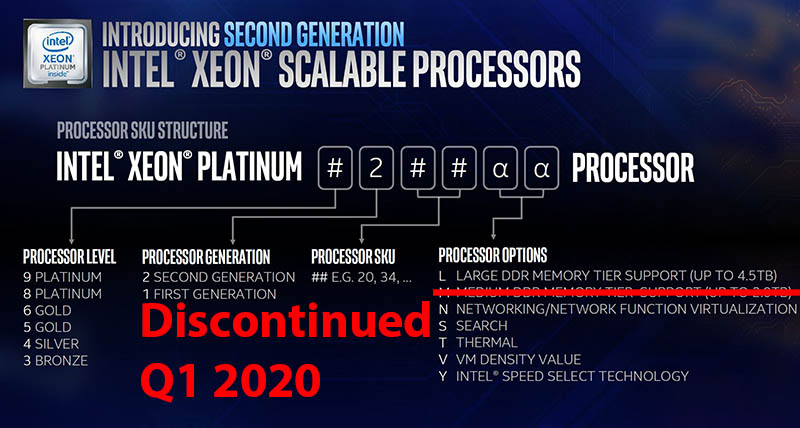
Intel is not just removing this tier. It is also adjusting the L series pricing to where the M series has been. In the example above, we expect the list price for the Intel Xeon Platinum 8260L to drop by almost $4900 once this change goes into effect.
At the top end, that has an enormous impact on the cost of an Intel Xeon CPU to support a TB of memory. Here is what 4 and 8-socket capable Intel Xeon CPUs cost to support 1TB of RAM in the 165W TDP range since 2015. You can see the new Xeon Platinum 8276L pricing combined with the 4.5TB of memory support brings it almost on-part with the Xeon E7-8890 V4.
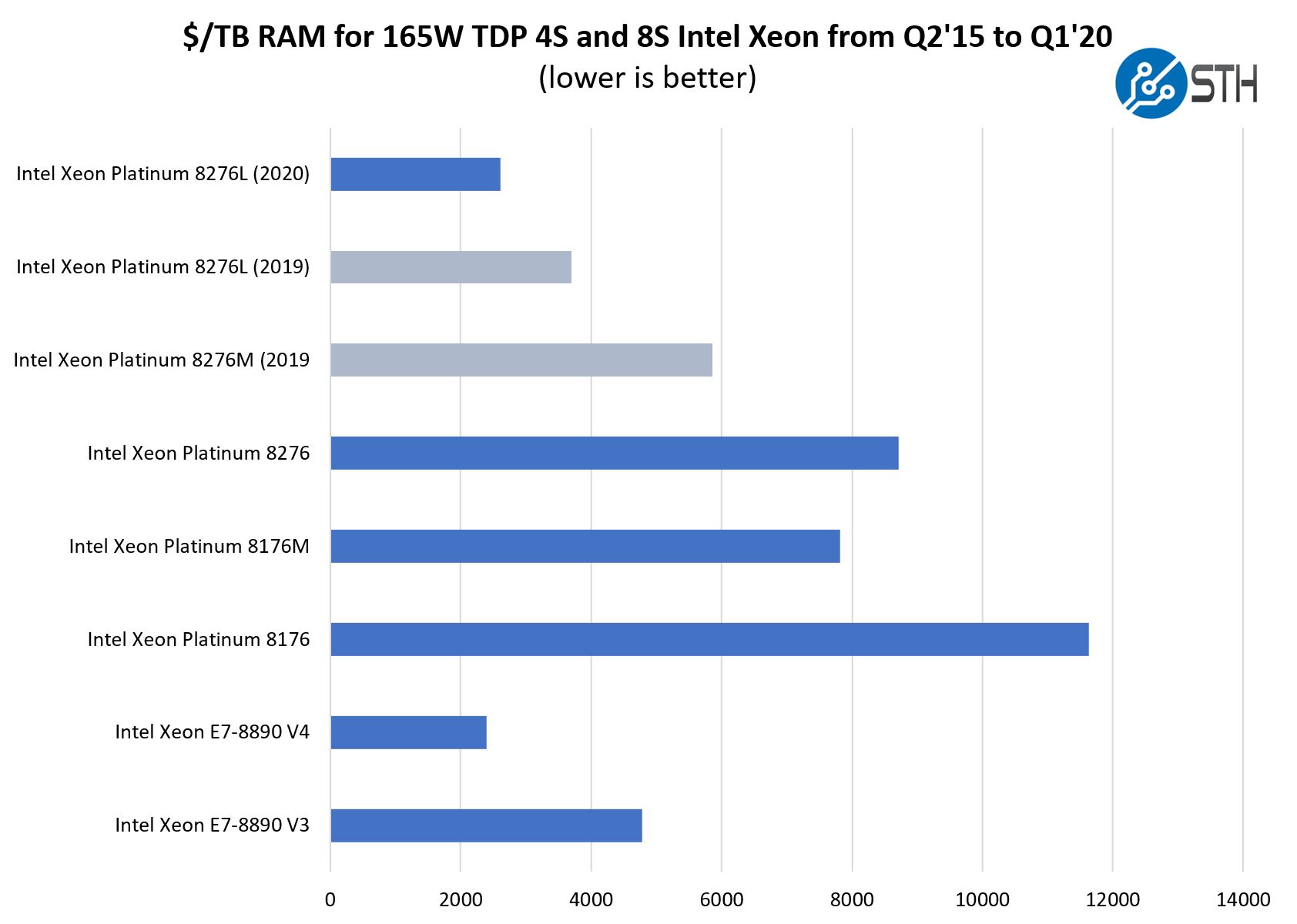
We expect the following SKUs to be impacted (in our update on 2020-01-16 this is now confirmed):
- Intel Xeon Gold 5215M / 5215L
- Intel Xeon Gold 6238M / 6238L
- Intel Xeon Gold 6240M / 6240L
- Intel Xeon Platinum 8260M / 8260L
- Intel Xeon Platinum 8276M / 8276L
- Intel Xeon Platinum 8280M / 8280L
Intel told us that customers are being notified via a Product Discontinuance Notice tonight, and ARK should be updated tomorrow. For those that think Intel has too many SKUs, this is a step in the right direction towards rationalization and simplification. Note these are the server parts, not the workstation parts that are impacted.
Here is a quick video going over some of what is in this article:
As an update, we now have the Intel PCN 117365-00. Here is what the discontinuance plan and key dates are. One can see that the last order date is expected to be 2020-05-22.

According to the PCN, the discontinuance of the M series is:
In an effort to simplify our Intel Xeon Scalable Platform CPU portfolio and to deliver more value to the market, the products listed in the “Products Affected/Intel Ordering Codes” will be discontinued and respective demand can be satisfied through other SKU offerings. The discontinued products identified in this notification will be unavailable for additional orders after the “Last Product Discontinuance Order Date” (see “Key Milestones” above) (Source: Intel PCN 117365-00)
That is in-line with what Intel told us just before the release went out. That ends the 2020-01-16 update.
2nd Gen Intel Xeon Scalable “M” and “L” SKU Coverage on STH
At STH, you have seen L SKUs several times. Our first interaction was a set of 8x Platinum 8276L SKUs around launch. You can read more about them in our Quad Intel Xeon Platinum 8276L Benchmarks and Review.
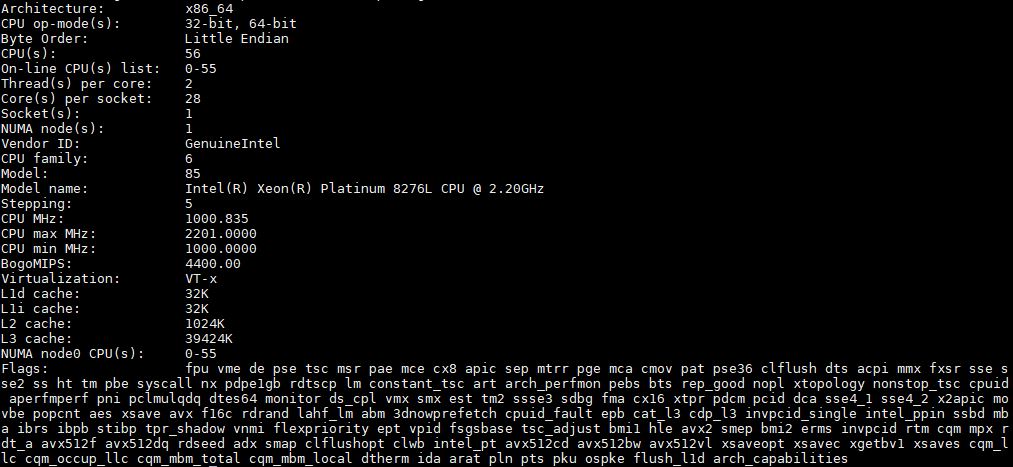
We also used these CPUs in our Inspur Systems NF8260M5 4P OCP Server Review and our Supermicro BigTwin SYS-2029BZ-HNR Review.
As we started to work more with Intel Optane DCPMM, we also procured a pair of Platinum 8260L’s since they are needed for 6x 512GB Intel Optane DCPMM operation. We published our Intel Xeon Platinum 8260L v 8260 Standard Performance Check and found the standard and “L” SKUs to be comparable in CPU performance.
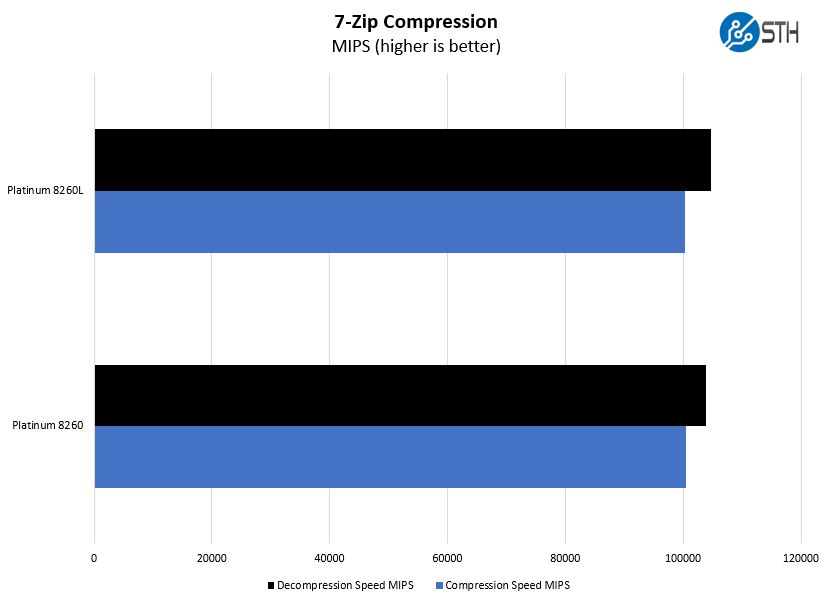
Although we have tested dozens of 2nd Generation Intel Xeon Scalable single, dual, and quad-socket configurations, we did find something interesting. We never tested “M” series SKUs. Perhaps the fact that we did not cover the SKUs was guided by customers and vendors wanting to showcase “L” SKU performance.
Final Words
There are a few major points we should make here. Intel is listening to customer and market feedback and is making a move that is good for customers. Intel now has competition, so this move allows Intel to weaponize its Optane DCPMM technology to press a key advantage it has over the AMD EPYC 7002 series. Optane DCPMM is not perfect, but it is a game-changing technology in several markets.
For our readers, a bit of practical advice. We recently purchased two Platinum 8260L CPUs that when re-priced will be about 39% less expensive or over $10,000 less expensive including tax. If you have configurations and quotes out there for “L” series parts, you should get them re-priced before ordering. If you have configurations and quotes for “M” series parts, ensure they get updated to the “L” series. You may not need the memory capacity, but as we have shown CPU performance is about the same and it is probably worth having in the small event you wanted to do a significant future memory upgrade.
Overall, this is going to cause some CPQ (configuration, pricing, and quoting) pain throughout the ecosystem, but it is also a big win for customers. Driving down the cost of computing, and enabling more organizations to access higher memory capacities and large DCPMM pools is a big win for Intel’s customers and the entire ecosystem.

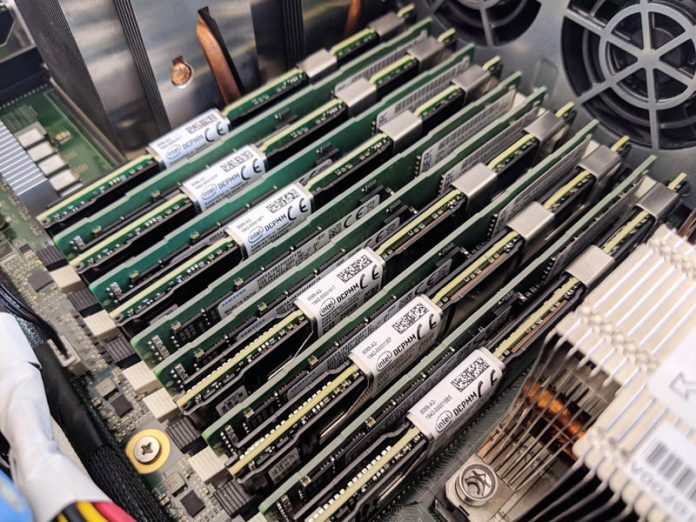



“Intel is listening to customer and market feedback and is making a move that is good for customers.”
That’s one spin that can be put on it, I suppose (as though Intel would ever lower prices due to customer feedback!); the other spin is that they had best adjust some pricing to avoid being completely steamrolled out of the market ….in ‘Epyc’ fashion…by processors with equal core counts costing massively less near the top end, and, of course, AMD now fielding 64 core single socket CPUs, even INtel’s top end is now feeling massive pressure!
Couldn’t agree more Mark – For the cost of buying 2x M series SKU CPUs, instead I can purchase an entire AMD single socket server with more corre, 1TB of RAM, and some SSD for HCI, from multiple big vendors. This is not Intel listening the customer feedback, this is Intel being very scared by a drop off in orders, and is a result of them having inflated prices for years IMHO!
@Mark +1
Let’s fix and complete the sentence “Intel is listening to customer and market feedback and is making a move that is good for [Epycurean] customers…who can’t stop screaming the three letters “A”, “M” and “D” in that order.
They should scrap the L SKUs too, and bring price further down.
Even after doing that, because their chips are so far behind AMD, its still unattractive. Due to the crappier platform, even using 512GB Optane you end up with only 4.5TB, versus 4TB for EPYC. And 4.5TB is only possible on the Xeons if you used App Direct, which requires recompiling.
This is why Intel is not successful beyond their bread-and-butter CPU business. Rather than giving the adjacent businesses a fighting chance, in the effort to sell CPUs for a higher price, they kill it before it has a chance to grow.